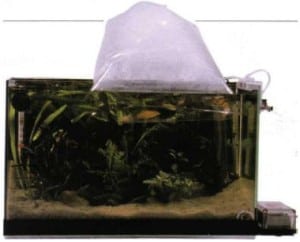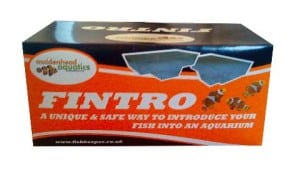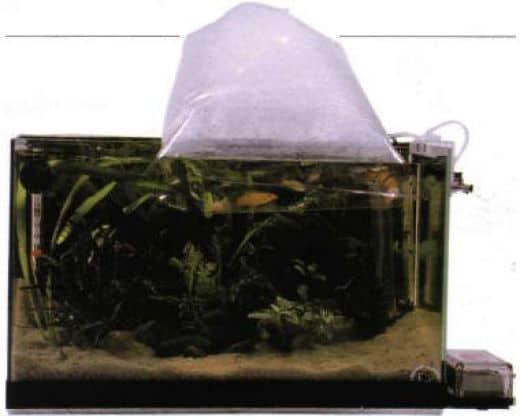It might seem like an obvious question and topic to tackle but the adding of tropical fish to your aquarium shouldn’t be taken lightly and has a significant impact on the fish. When you consider they have been travelling in a bag for some time and will already be quite stressed due to this so the final part of the journey to their new home should be as stress-free as possible.
The recommended method for adding fish to the aquarium involves what is referred to as acclimatisation. There is a strong chance that the fish have come from different water conditions to those which are in your fish tank so it is important to introduce these new conditions to the fish gradually – this process is called acclimatisation. If this isn’t done then the fish will get a big shock and it could have serious side effects, possibly early death. It is a similar thing to us stepping off an airplane in a different country and the different air and weather conditions change the second you step off, the affect could be much more severe than this and fish are more prone to stress than we are.
Before starting the acclimatisation process it is highly recommended that you turn any lighting on the tank, off. This is to avoid shock and to allow the fish to swim around their new environment without being under the spotlight so to speak.
To acclimatise fish to the aquarium can be done in several ways, the first an most common method is “floating the bag”. You have probably transported your fish in a bag from the store to your home, the first thing to do when you get home is put the bag on top of the aquarium water and leave it floating for 15 minutes. This is so that the temperature of water inside the bag is equal to that of the tank.

It’s now time to cut the bag open at the top and put some of the aquarium water in to the bag, this process should be repeated several times over 15-30 minutes, exchanging some of the water in the bag with the aquarium water. After this process the water parameters in the bag containing the new fish should be equal to those of the aquarium itself. It’s now time to push the open bag under water and encourage the fish to swim out in to the tank. Be careful not to let the bag close in on itself trapping the fish. One method you could use to avoid this happening is to initially transfer the fish to a solid container before starting the acclimatisation process. This is not often used though as it could just cause more unnecessary stress to the fish.
There are devices designed to do the acclimatisation process for you, unless you are constantly introducing a lot of fish I would say these are not a necessary investment and can just as easily be done manually as described in the process above.

Another method of introducing fish to your tank is to do a drip acclimatisation process. This is more commonly used for larger fish where they may have been shipped in a solid container such as a poly box rather than a bag. This method involves using an airline and placing one end in your aquarium, the other in the container housing the new fish. You then need to suck on the airline (try not to swallow any of the water!) so the aquarium water drips down in to the box. After the box has become full the fish should be acclimatised. It is then ok to catch the fish out of the box and place in to the aquarium. When fish travel they are more likely to produce harmful waste which is better off not being added to the aquarium. It is therefore best that the water in the box the fish travelled in is disposed of and fresh water added to the aquarium to get the level back up.
Now your new fish is in the aquarium it is best to let them swim around for a few hours with the lights off to get used to their new home. It is also advisable not to feed the fish on the first day of introduction. When a fish is fed is more likely to get lazy and not swim around. It is important in the early stages of introduction to a new tank that a fish gets to know their home so not feeding them helps to keep them active and inquisitive about their new surroundings.


Related Posts
A Deeper Look In To Loach Fish Species
How Much Salt Should I Add To My Freshwater Aquarium
Everything You Need To Know About Using T5 Lights For Your Aquarium